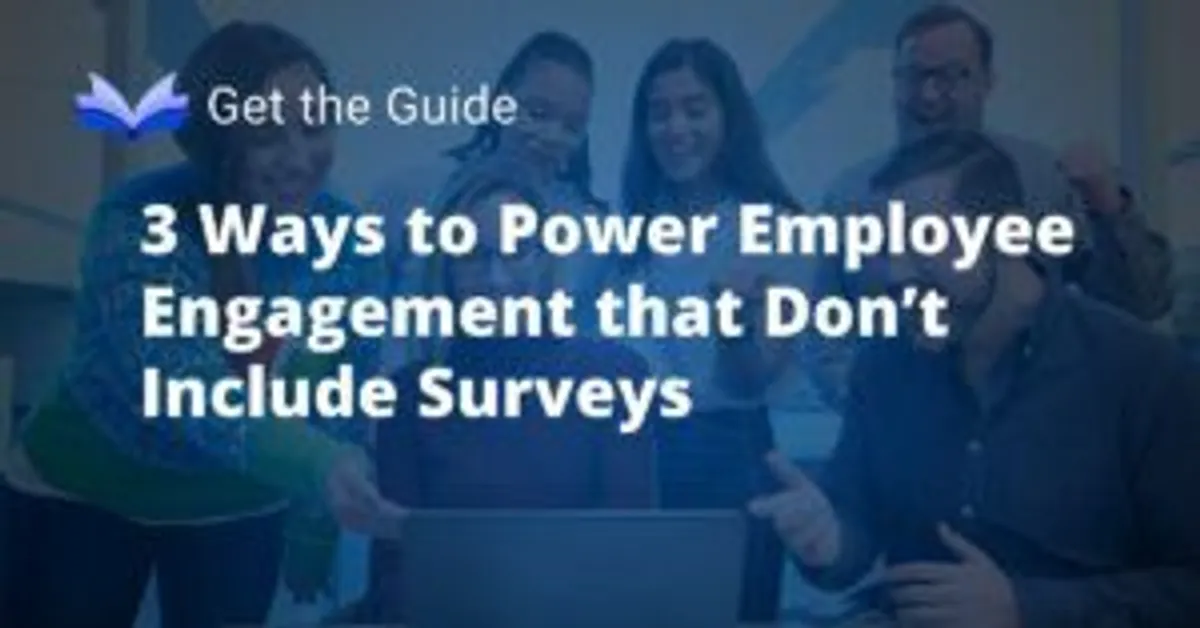
3 Ways to Power Employee Engagement that Don’t Include Surveys
Gallup reports that the number of actively disengaged employees rose to 18%. This is not good news when you consider that a disengaged employee is 2.3x more likely to be exploring other jobs! If you’re struggling with employee engagement in your workforce, this eBook is for you.
Employee engagement is a measure of employees’ commitment to helping their organization achieve its goals. More than just a measure of one’s satisfaction at work, it’s demonstrated by how employees think, feel, and act, as well as the emotional connection employees feel towards their organization, their work, and their teams. It’s the energy they have around their work, and in the end, employee engagement is the outcome or result of different aspects of the overall employee experience.
Prior to 2020, employee engagement was rising globally for nearly a decade — but now, employee engagement is stagnant, and most believe it’s because teams have less opportunity to build meaningful connections. Addressing the structural and cultural issues that have limited connection and created disengagement in your organization is the first step to laying the foundation for a new and better employee experience.
Employee Engagement by the Numbers
Just how much does an engaged workforce improve a business’s bottom line? Here are a few of the numbers according to Gallup.
Organizations with highly engaged employees report:
- 81% less absenteeism
- 43% less turnover
- 23% higher profitability
To effectively mitigate and prevent future disengagement, you have to first get to the root of the problem – how and why employees become disengaged.
Here are just a few of the reasons:
- Poor onboarding
- Lack of connection or purpose
- Absence of recognition
- Not feeling heard by leaders
But this doesn’t happen overnight. There is no disengage button your employee clicks. Instead, employees experience any – or all – of the examples listed above over the tenure of their career or their time at your company. And if not mitigated, slowly but surely, an employee who came into a position with the highest of potential will now be spending their workday waiting for it to be over.
The good news is that some of the most important and impactful solutions take into account the fact that work life and personal contentment aren’t mutually exclusive. In fact, everything – including employee engagement and retention – improves when we bring the two into alignment through deeper connection.
In this eBook, we explore the state of disconnectedness that led to this disengagement, how to spot an engaged vs disengaged employee, and most importantly, 3 ways to drive employee engagement that don’t include yet another employee survey!